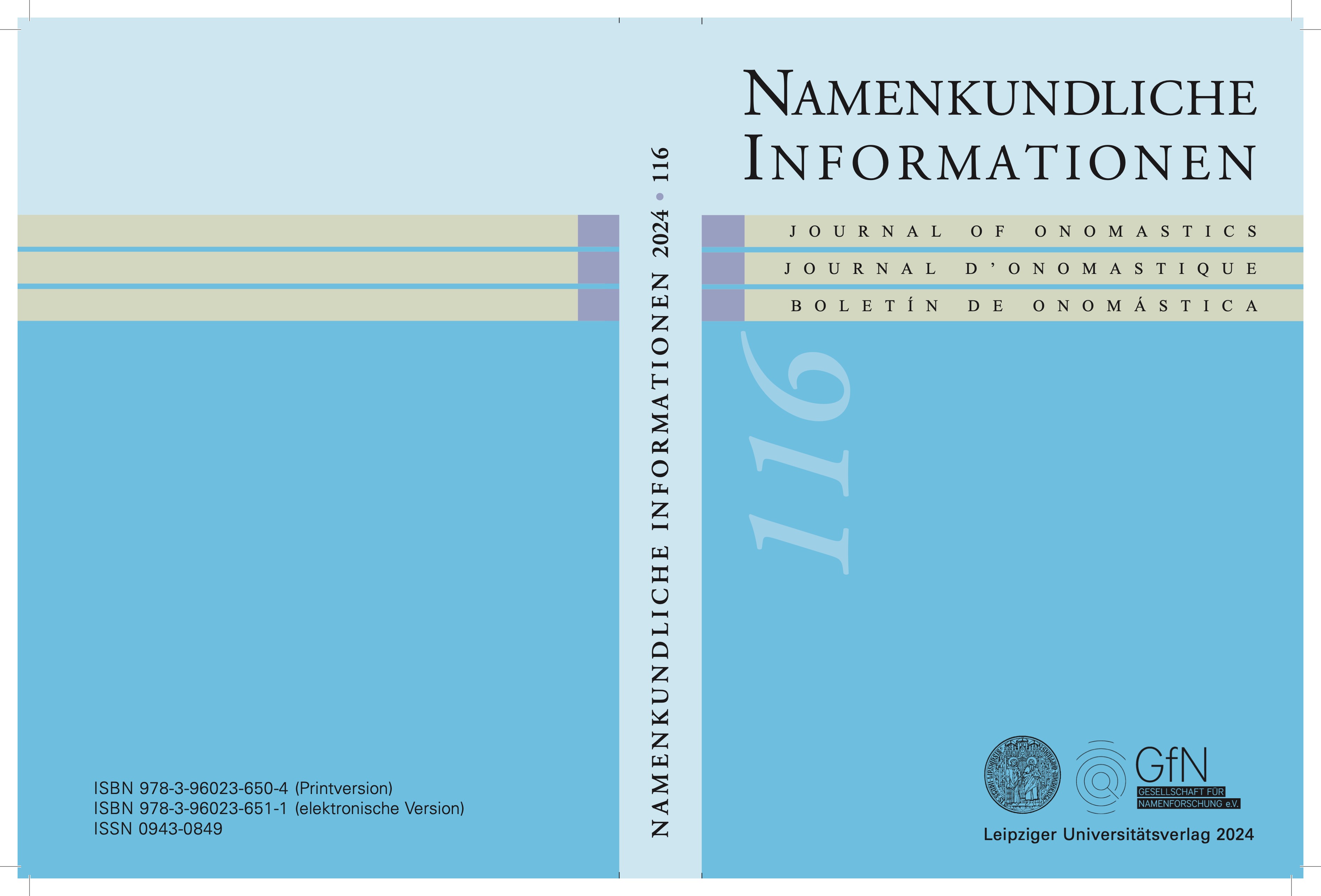Möhritz, Pferdinand, Tango und Mr. Wuff – Onomastische Studie zu Namen von Kuscheltieren
DOI:
https://doi.org/10.58938/ni757Abstract
The names of cuddly toys, considered unofficial names, have not been sufficiently researched onomastically so far. The results of the present study reduce this research gap. Formal, semantic and functional aspects are presented using a corpus of 262 cuddly toy names given by 3- to 10-year-old children. Formally, it is shown that single words are primarily chosen from possible morphological- syntactic forms. In terms of word formation, these are less complex; explicit derivatives with the suffix -i dominate. More than half of the single words have an onymic base, with fictionyms and anthroponyms being particularly prominent. On the one hand, children seem to be taken with the characteristics of fictional characters from books, films, etc. On the other hand, anthroponymic bases indicate that children regard their cuddly toys as living beings. From a semantic point of view, the names that children have created themselves, i.e. not adopted, are examined. It becomes clear that selected naming motifs are important to children. From a functional point of view, it can be concluded that, in addition to their identification
function, cuddly toy names have a pronounced individualization function. Ultimately, cuddly toy names represent components in the linguistic development of children, which requires a broader sociolinguistic consideration.
Downloads
Veröffentlicht
Ausgabe
Rubrik
Lizenz
Copyright (c) 2024 Inge Pohl

Dieses Werk steht unter der Lizenz Creative Commons Namensnennung 4.0 International.
Es findet keine exklusive Übertragung von Verwertungsrechten (Copyright Transfer) an die Zeitschrift statt. Die Autor/innen stimmen bei Manuskripteinreichung der Veröffentlichung unter der Lizenz Creative Commons Attribution 4.0 International zu.


